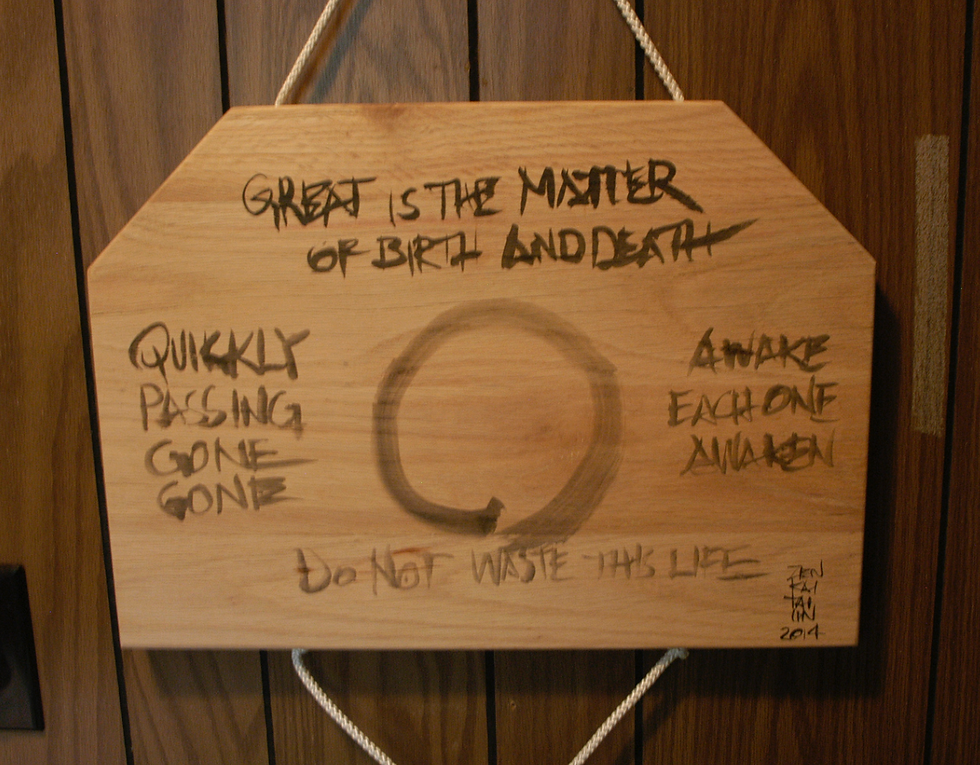Awakening The Zendo
- Unshin Sangaku

- Dec 5, 2022
- 3 min read
Updated: Dec 5, 2022

I live a short distance from the First Congregational Church of Falmouth, the place where we have our Sangha services. I drive there to be with others in practice.
We open the doors of the room we will use, then go to a storage area and collect our accoutrements for the zendo which have been placed in boxes and stored on our little yellow cart. The journey of the cart is short from storage area to the Church Parlor. We then assemble Buddhism and Soto Zen…
As a Soto Zen Sangha we are fortunate to have found a supportive host that has its roots in the town going back to 1708. This symbiotic nature is not lost on me as I see the evolving of a New England form of Zen (I use this as opposed to Western or American which seems more bulky to deal with) fusing Chan-like in this century. So a willing Christain Church accepting a Buddhist presence has a certain Zen aura of openness.
How does the Church Parlor become a Zendo you might ask? Meaningfully I answer:
We do not disturb the symbols of Christianity in the room
At this stage there is no Zendo
In front of an alcove of a Cross and Bible we hang a large banner of the word harmony in Japanese, representing sangaha fellowship. This is the backdrop for our alter
We move furniture with care, opening the middle of the room for kinhin with the outer space for sitting
We then build an altar on a table in front of the banner– the elevated platform for an Icon of Buddha, flanked by flowers and water
In front of and to Buddha’s left is Manjushri and to the right Avolakettsa, a candle between them and a small incense bowl (flanked by incense) in front of the candle, all of which sit on a brown altar cloth
To the left facing the altar is the Doan station. The place of time-keeping and rhythmical awareness of moment set-up by the doan to face the altar connecting time to space
Directly facing the altar and at the far end of the room, is the seat of the Eno with the Doshi on the opposite side of the room from the Doan. Using a clock face, the Altar is at 12, Doan 11, Eno 6 and Doshi 3
Once the Zendo is built the Doan enters and is seated followed by the Eno while the Doshi is outside the room
All of the conditions are set for the Zendo to awake
At 7:00 PM the Doan begins striking the han, a large wooden board used to call people to service (interestingly we sit under the church bell and the two sounds of wood and iron are penetrating at 7 of the clock) like an alarming going off, at the ear of one at sleep
The Doshi enters the room and circumnavigates the space and lights the candle on the altar
After the striking the han, the Doan proclaims the great truth or meaning of birth and death and asks all to consider awakening and seeing the moment fully, not dozing in waste of one’s life
After this is said three bells are struck- Buddha (awakened), Dharma (teachings of awakening) and Sangha (actualizing/living/)
The Doshi goes to the altar and light incense on the first strike (Buddha) returns to her seat and bows to the cushion on the second bell (Dharma) and turns and bows to the Sangha on the third bell
The Zendo is now awake
One could say it takes 2500 years to awaken the Zendo. It is a tradition of remembering and honoring wherever this ceremony is enacted. It is about the awakening of Siddhartha Gautama. It is the actualization of awakening, it is your awakening along with the 10,000 things.
108 Bows,
Sangaku




Comments